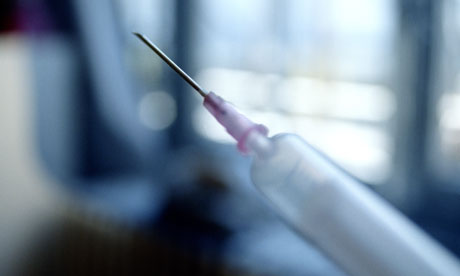
When it comes to our bodies, we are a nation obsessed with the quick fix. Whatever your problem the internet is filled with promises of cheap and – supposedly – painless solutions. In 2009, 1.1 million non-surgical cosmetic procedures were performed, and this March, Superdrug became the first high-street retailer to offer budget anti-wrinkle injections, derma-fillers and other treatments normally the preserve of private clinics.
Companies such as Superdrug employ doctors and dentists to run their clinics. But in a growing industry that successive governments have failed to regulate not everyone else is so responsible. According to Fazel Fatah, consultant plastic surgeon and president of the British Association of Aesthetic Plastic Surgeons: "The notion of what people call aesthetic treatments has been developed around various injectables and non-invasive procedures. This has allowed people with no surgical medical training to establish a practice and make easy money with little if any thought as to the patients' wellbeing. The availability of drugs on the internet without prescriptions is feeding into what is actually a completely unregulated practice."
The organisation is particularly worried about backstreet procedures for men seeking genital enhancement. It says it has evidence of a number of websites promoting the use of silicone injections into scrotums and penises – unlicensed treatments performed by medically unqualified practitioners that can result in serious medical problems.
Jim Horton certainly wishes he had heard this warning earlier. The 50-year-old aircraft engineeer underwent one such procedure in 2007. "I've always had quite a tight scrotum and heard through various online chat sites that I could get it made bigger," he says. "Everyone who'd had it done seemed to say they were really happy with the results, so I emailed the guy who I was told was carrying it out and arranged to see him. He sent me details of what would happen. It all seemed very professional and above-board."
It was only when he arrived for his appointment that Jim began to worry. "I thought there'd be some kind of surgery inside – but it was nothing more than a normal house," he says. "The man I went to meet said he worked on North Sea oil rigs, but he seemed very calm and confident and he told me that he'd done this to more than 90 other men, as well as having had silicone injected into his own penis and scrotum. I trusted him and went upstairs."
But after Jim had showered and was lying on the bed, waiting to be injected, things got worse. "I noticed the silicone was kept in an open milk bottle on the side – and this guy put the syringe full of the silicone into a regular sealant gun you'd buy from a DIY store. He said he needed to apply extra pressure as the fluid was so thick, but by now I was in his hands and went along with it."
Over the next 30 minutes Jim had 60ml of silicone injected in each side of his scrotum. Afterwards, he got dressed and handed over £120. "I felt fine and my scrotum looked and felt better. I was happy with what I'd paid for," he says.
However, by Christmas he noticed that the injected areas had started to harden and become misshapen. "I called the guy who did it, asking if this was normal, and he just said 'bad luck' and hung up on me. I suddenly felt so stupid and angry for having put myself in this position. I didn't know who to turn to."
Over the next 18 months Jim's problems increased. "The pain was getting worse as the silicone hardened around my testicles, so when I stood up it felt like they were being yanked down with the weight. I couldn't sleep, I couldn't work and I felt like a freak." Finally, in February 2010, he met Marcus Drake, a consultant urologist at Southmead Hospital in Bristol, who tried to remove the silicone in an operation. "I was warned I could lose my testicles, but I was in so much pain, it seemed a risk worth taking," Jim says.
Unfortunately the operation had to be stopped when the flesh on his scrotum lost its blood supply. "I spent the next three weeks at home with a district nurse coming round every day to dress the wound and keep it clean, but the smell of rotting flesh was simply horrendous," he says.
Next, Drake performed a joint operation with Antonio Orlando, a cosmetic surgeon from nearby Frenchay Hospital, who took a skin graft from his leg to replace the skin on his scrotum. "I was told they still couldn't get the silicone out without risking cutting off vital blood supplies, but they could sort my scrotum out," he says.
However after this operation, Jim says the skin tightened, leaving him in agony. "I was finally admitted as an emergency case when the pain became too much to handle and in April this year both Drake and Orlando removed 80% of the silicon, but within a week I was readmitted to hospital with an infection and was on a drip for four days. I've healed now and am feeling almost human for the first time in almost four years. I'm just so relieved to be able to walk and function again, but owe those surgeons and the NHS a huge amount for sorting out this stupid mess I created. I just want to expose this backstreet industry and stop other men going down the same route I did."

